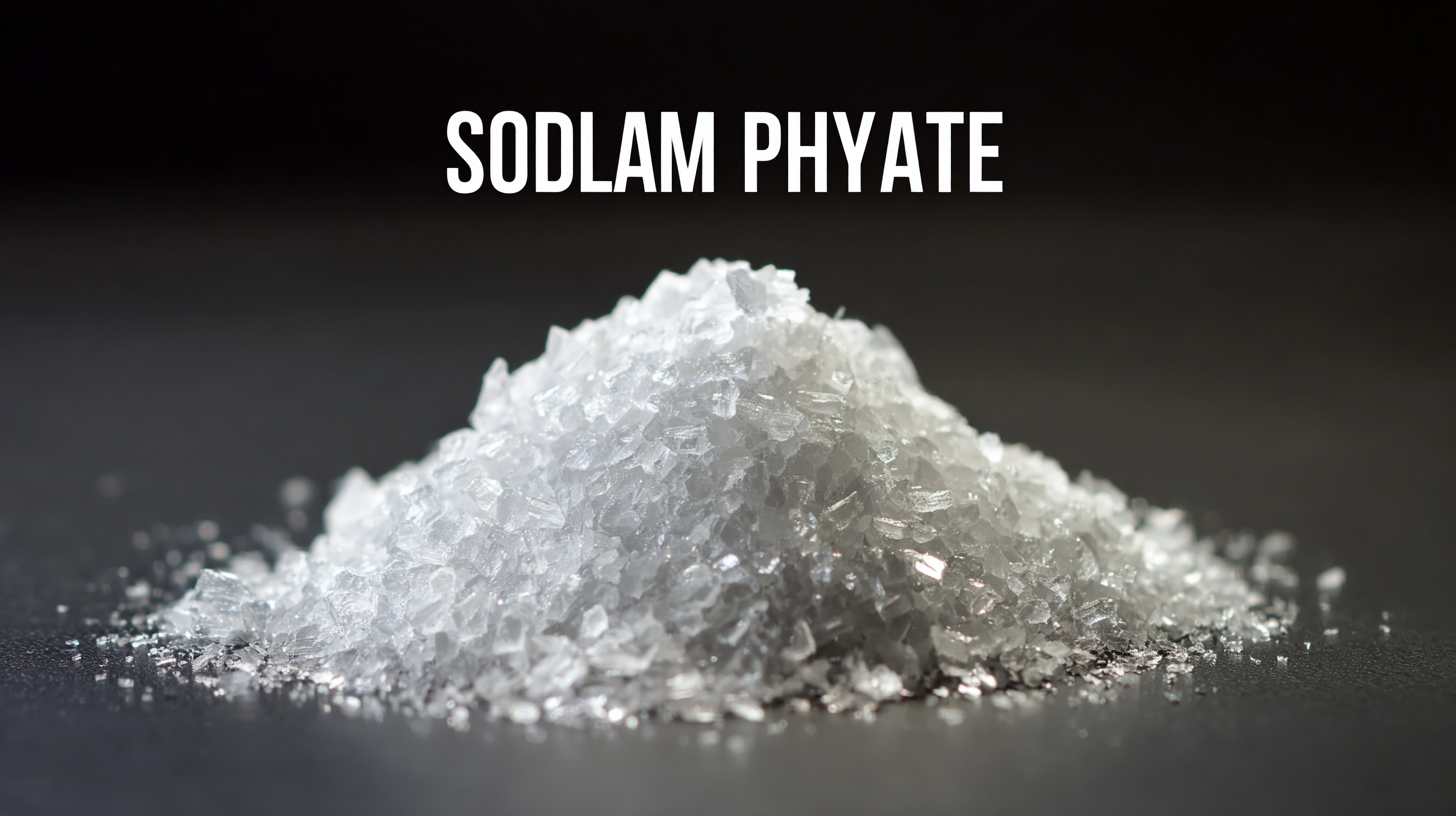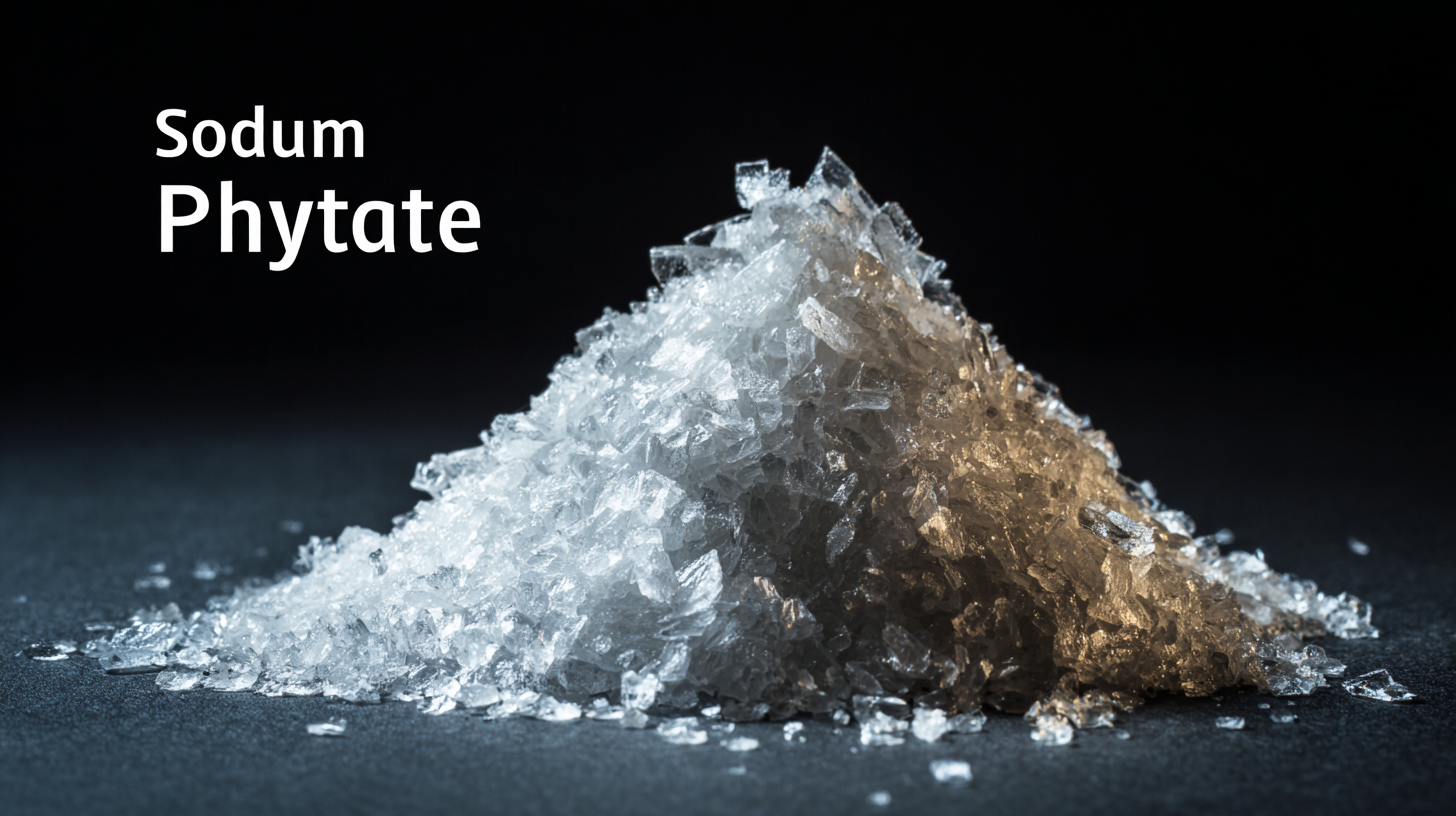Exploring Unique Alternatives to the Best Sodium Phytate for Your Needs
As awareness of health and nutrition grows, the demand for natural food additives like Sodium Phytate has surged, with the global food additives market projected to reach USD 203.4 billion by 2026, according to a report by IMARC Group. Sodium Phytate, known for its ability to chelate minerals and enhance the nutritional profile of foods, is becoming increasingly popular among health-conscious consumers and food manufacturers alike. However, as the industry evolves, many are now seeking unique alternatives that can provide similar benefits without the potential drawbacks associated with Sodium Phytate, such as its impact on mineral absorption in certain populations. This blog will explore innovative substitutes that maintain the functionality of Sodium Phytate while catering to diverse consumer needs and preferences in a rapidly changing market.

Understanding Sodium Phytate: Benefits and Drawbacks
Sodium phytate, derived from phytic acid found in plant seeds, is gaining attention for its potential benefits in various applications. One of the primary advantages of sodium phytate is its ability to chelate minerals, making them more bioavailable in nutritional supplements. This attribute is particularly valuable in diets where mineral absorption is a concern. Furthermore, sodium phytate acts as a powerful antioxidant, helping to reduce oxidative stress in the body, which can have long-term health benefits.
However, sodium phytate also comes with its drawbacks. One significant concern is its potential to inhibit the absorption of certain nutrients, such as calcium, zinc, and iron. This interaction can lead to deficiencies if sodium phytate is consumed in excessive amounts or without a balanced diet. Additionally, its strong chelating properties can complicate the formulation of multi-mineral supplements, necessitating careful dosage and combination of nutrients. As such, understanding both the benefits and drawbacks of sodium phytate is essential for anyone considering its inclusion in their dietary regimen or product formulations.
Exploring Unique Alternatives to the Best Sodium Phytate for Your Needs
| Alternative | Source | Benefits | Drawbacks |
|---|---|---|---|
| Calcium Phytate | Various Plants | Supports mineral absorption, derived from natural sources | Potentially less effective in certain formulations |
| Magnesium Phytate | Whole Grains | May enhance digestive health, antioxidant properties | May interfere with the absorption of some minerals |
| Zinc Citrate | Zinc Sources | Highly bioavailable, supports immune function | Can lead to gastrointestinal discomfort in high doses |
| Iron Chelate | Synthetic/Agricultural Sources | Improves iron absorption | Risk of heavy metal accumulation if not monitored |
| Sodium Bicarbonate | Natural Mineral | Widely available, lends alkalinity | Can disrupt stomach acidity if overused |
Industry Standards for Sodium Phytate Production and Quality
The industry standards for sodium phytate production emphasize the importance of maintaining specific quality parameters to ensure its effectiveness in various applications. Recent studies highlight how environmental factors like pH and temperature can significantly influence the activity of phytase, an enzyme responsible for releasing phosphate from phytic acid. Research has shown that purified phytase derived from specific bacterial strains, such as those isolated from sources like Shigella sp. CD2, can enhance the efficacy of sodium phytate in various formulations.
Additionally, the incorporation of alternative sources of phytic acid, such as that extracted from rice bran, is gaining attention in the food processing sector. For instance, the antioxidant properties of purified phytic acid combined with additives can enhance the shelf life and nutritional profile of processed meats, like chicken mortadella. These innovations reflect a shift in industry practices as manufacturers seek to meet the growing demand for clean-label ingredients while adhering to stringent quality standards established for sodium phytate production. The synergistic effects of these combinations could pave the way for developing unique alternatives tailored to specific consumer needs and preferences.
Alternative Ingredients: Exploring Options Beyond Sodium Phytate
In recent years, the growing trend towards plant-based diets has led consumers to seek alternatives to traditional additives like sodium phytate. With rising concerns surrounding sustainability and health, it is crucial to explore various ingredients that can fulfill the role of sodium phytate while aligning with ethical and dietary preferences. By focusing on plant-derived options, we can uncover a diverse range of substances that not only support nutritional needs but also promote a greener lifestyle.

Alternative ingredients such as rice bran, pea protein, and flaxseed offer viable solutions that mirror the functional benefits of sodium phytate, particularly in enhancing mineral absorption and acting as a natural preservative. These plant-based alternatives not only cater to vegan and vegetarian diets but also provide additional health benefits, such as omega-3 fatty acids from flaxseed and the protein content found in legumes. As consumers increasingly prioritize health, sustainability, and personal beliefs, the food industry is adapting by integrating these innovative ingredients into a variety of products, ensuring that dietary choices can be both responsible and nutritious.
How to Choose the Right Sodium Phytate Substitute for Your Application
When searching for the best sodium phytate substitute for your application, it's crucial to understand the specific requirements of your formulation. Sodium phytate primarily serves as a chelating agent and antioxidant, commonly utilized in food, cosmetics, and agriculture. A report by Grand View Research suggests that the global market for chelating agents is expected to reach $7.6 billion by 2025, driven by the increasing demand for natural and effective alternatives. Therefore, identifying a suitable substitute like calcium phytate or magnesium phytate could enhance your product formulation while maintaining efficacy.
Tips for selecting an appropriate alternative include assessing the pH stability and solubility of the substitutes in your application. For instance, calcium phytate has shown a similar performance profile to sodium phytate in terms of metal ion chelation but may be better suited for formulations that require higher pH levels. Additionally, consider the source and purity of the alternative; using a plant-based extract could align with the growing consumer preference for clean labels in food and cosmetics. Always conduct thorough testing to ensure compatibility and effectiveness in your specific application.
Exploring Unique Alternatives to the Best Sodium Phytate
This chart illustrates the performance of various sodium phytate substitutes across different applications. The data represents their effectiveness in terms of Chelation Strength and Stability in different environments.
Practical Tips for Implementing Alternative Solutions in Production
When looking for alternatives to sodium phytate, it’s essential to consider how these substitutes can be practically implemented in production. One effective alternative to sodium phytate is using natural extracts that contain polyphenols. These compounds are not only effective chelators but also provide additional health benefits, making them an attractive option for food and supplement industries. Incorporating these natural extracts may require adjustments in processing techniques, as their stability can vary. Therefore, conducting thorough trials to determine optimal conditions for incorporation can be crucial.
Another viable solution is introducing alternative chelating agents such as citric acid or ascorbic acid. These substances can be integrated seamlessly into existing production lines with minimal changes to equipment or processing times. It's advisable to evaluate how these alternatives interact with other ingredients in formulations to ensure that the desired nutrient profiles and sensory attributes are maintained. Regular monitoring and feedback from quality control can help refine the process and address any potential issues that arise during implementation.






